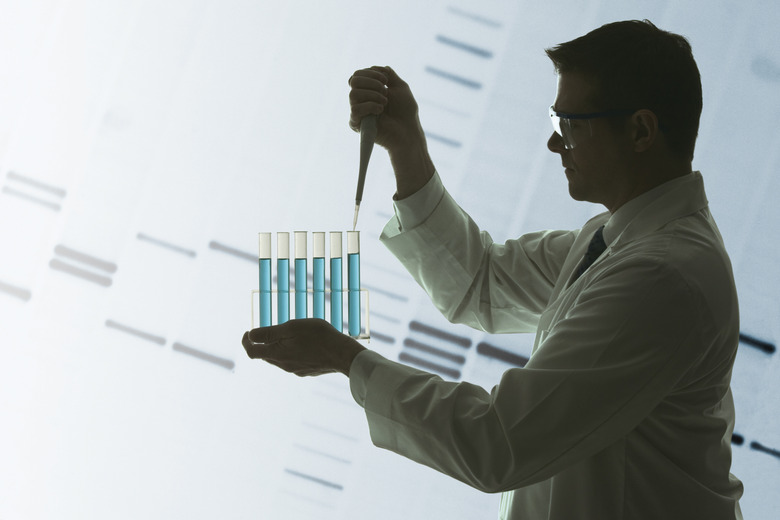What Is A Molecule Produced By Combining DNA From Two Different Sources?
Mixing the traits of completely different animals used to happen only in stories involving mad scientists. But using what is called recombinant DNA technology, scientists — and not just the mad ones — can now mix DNA from two different sources to make combinations of traits that wouldn't otherwise happen in nature.
How It Works
How It Works
To make recombinant DNA, scientists first extract the DNA they want to mix. The DNA can come from completely different organisms, including bacteria, plants, animals, algae or fungi. Using specialized lab techniques, scientists cut the pieces of DNA they want and paste them together to make an entirely new mix of DNA, called recombinant DNA, or rDNA (See References 1). They put the new rDNA into a host cell, which will absorb and copy the new DNA and show the traits that it codes for.
Different Methods
Different Methods
There are three main types of recombinant DNA technology, classified depending on the type of host that absorbs the new DNA. The most common method is to use a bacterial host, like E. coli. A second type of process uses a type of virus called a phage. A third way of using recombinant DNA is to inject it directly into a non-bacterial host (See References 1).
Uses for rDNA
Uses for rDNA
DNA from different sources can be mixed to make disease-resistant crops, new vaccines, cures for genetic diseases, and proteins to use in the treatment of conditions such as sickle cell anemia, diabetes, certain cancers and other diseases (See References 2).
Public Controversy
Public Controversy
When recombinant DNA technology was first introduced, scientists had to address what became known as the Frankenstein factor — the fear of living things with modified DNA (See References 3). Some people continue to express concern over the manipulation of DNA, and polls have shown a strong support for laws requiring labeling foods that come from plants or animals with DNA introduced from other sources (See References 4). However, because of the value that recombinant DNA technology has provided for agriculture and medicine, mixing DNA from different sources is not something that will go away anytime soon.
Cite This Article
MLA
Meister, Deborah. "What Is A Molecule Produced By Combining DNA From Two Different Sources?" sciencing.com, https://www.sciencing.com/molecule-produced-combining-dna-two-different-sources-21538/. 24 April 2017.
APA
Meister, Deborah. (2017, April 24). What Is A Molecule Produced By Combining DNA From Two Different Sources?. sciencing.com. Retrieved from https://www.sciencing.com/molecule-produced-combining-dna-two-different-sources-21538/
Chicago
Meister, Deborah. What Is A Molecule Produced By Combining DNA From Two Different Sources? last modified August 30, 2022. https://www.sciencing.com/molecule-produced-combining-dna-two-different-sources-21538/
